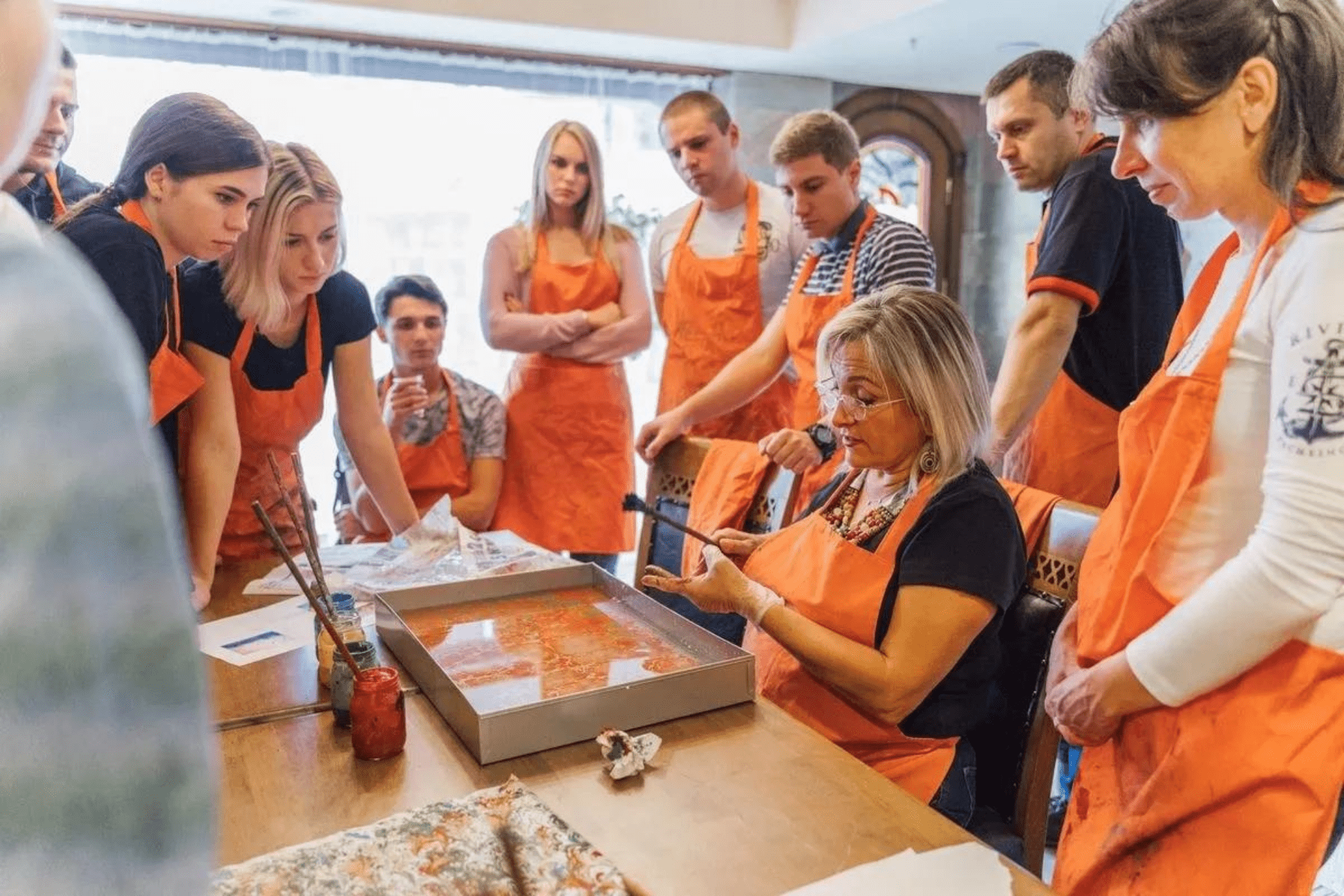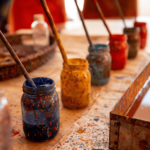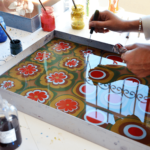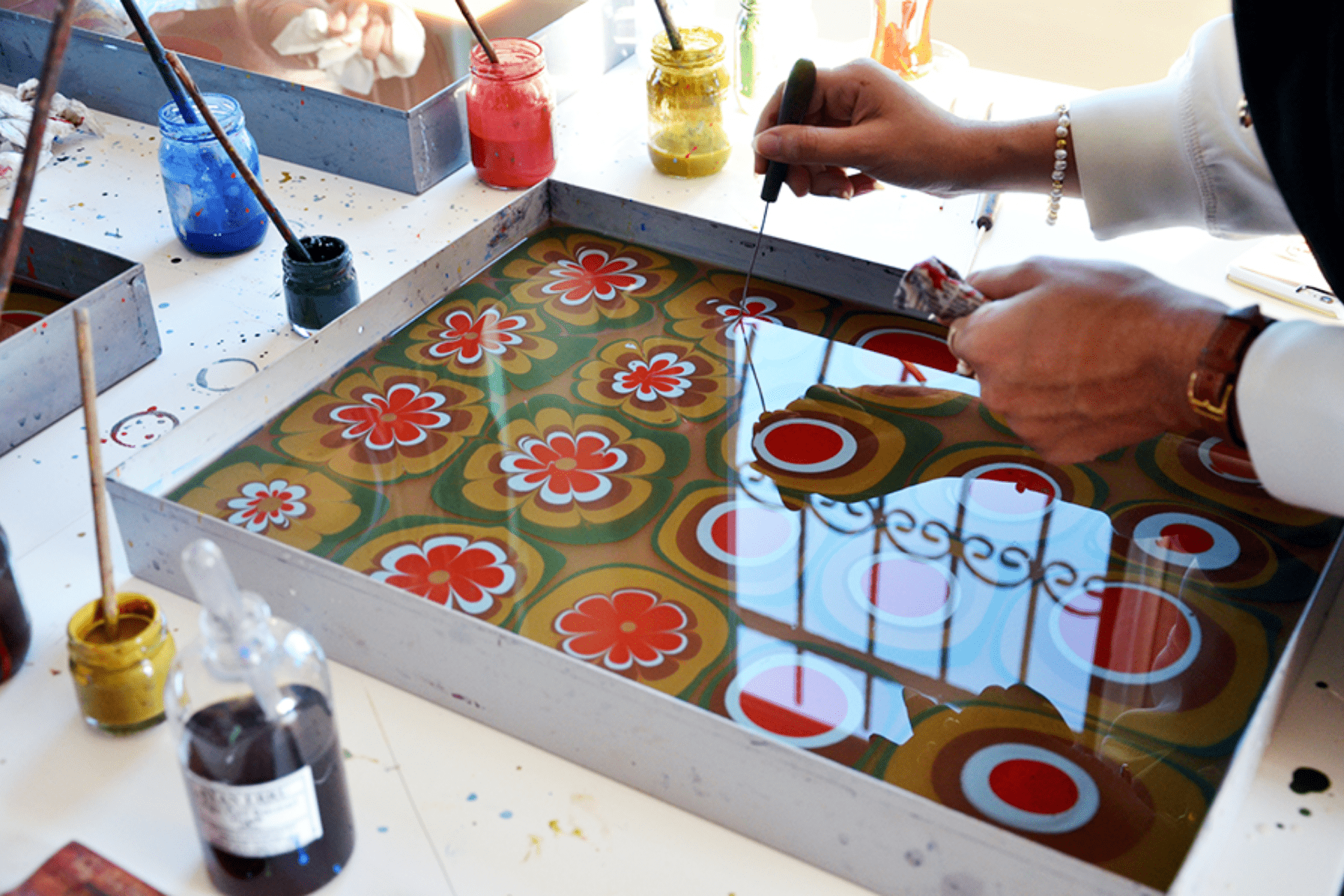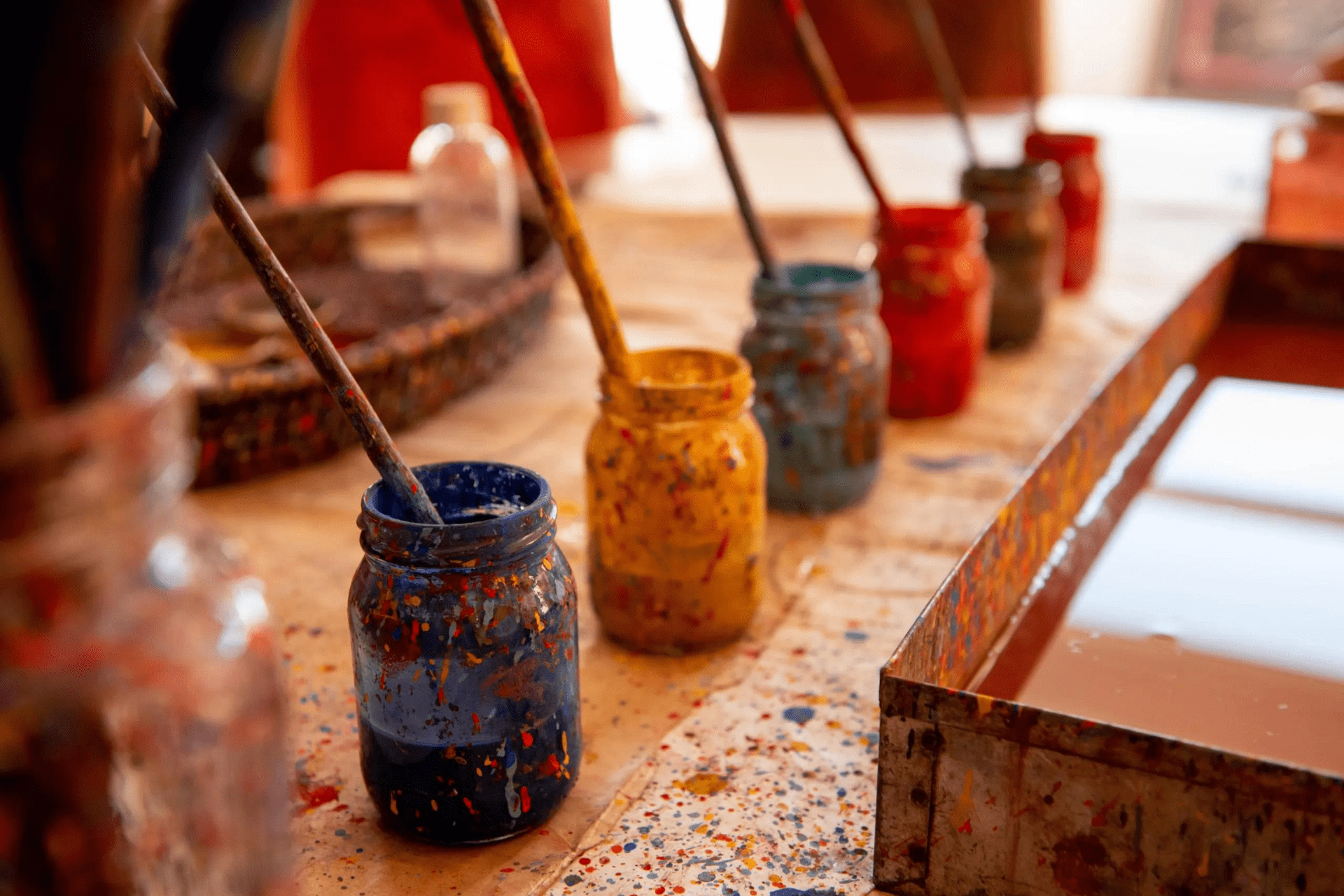Ebru technique consists of sprinkling colours containing a few drops of ox-gall on to the surface of the bath sized with kitre (gum tragacanth) in a trough. By carefully laying the paper over the bath, the floating picture on top of it is readily transferred to the paper; thus, each ebru is a one of a kind print. To obtain beautiful ebru results, one needs to have a light hand, refined taste, and an open mind to the unexpected patterns forming on the water. Patience and a good knowledge of traditional culture are characteristic of ebru masters.
After the 1550’s, booklovers in Europe prized ebru, which came to be known as ‘Turkish papers’. Many specimens in their collections and in the several album amicorum books are visible today in various museums. Also, early texts dealing with ebru, such as “Discourse on decorating paper in the Turkish manner”, published in 1664 by Athanasius Kircher in Rome, helped to disseminate the knowledge of this kind of marbling art. There is agreement amongst scholars that the so-called Turkish Papers played a colourful influence on the book arts in Europe.
Ebru Marbling is a unique art which many painting and design lovers like to do in their spare time and especially demonstrate to their friends on different occasions. Nevertheless, this spectacular piece of art does have many applications in daily life where it is used to enhance the decor and look of the goods. This patterned paper is extensively used in the binding of books and within the calligraphic panels in Turkey. In addition to this, “ebru” works are often framed as pictures and used all over the world as a piece of decoration. Other than paper work, the pattern is often designed on leather, glass, cloth, furniture, book covers, notebooks, invitations, and many other areas to reflect the unique glamour of this art.

